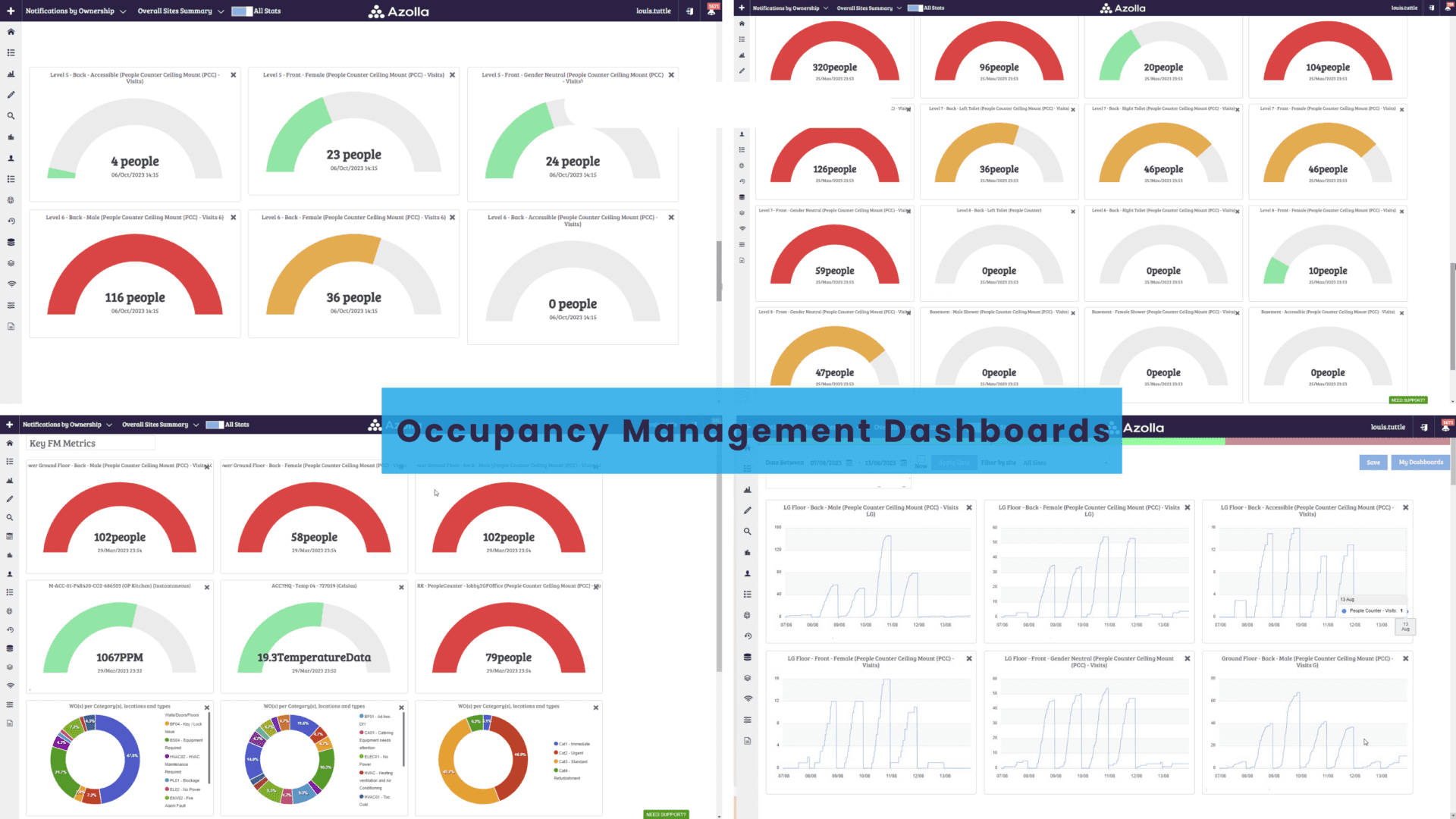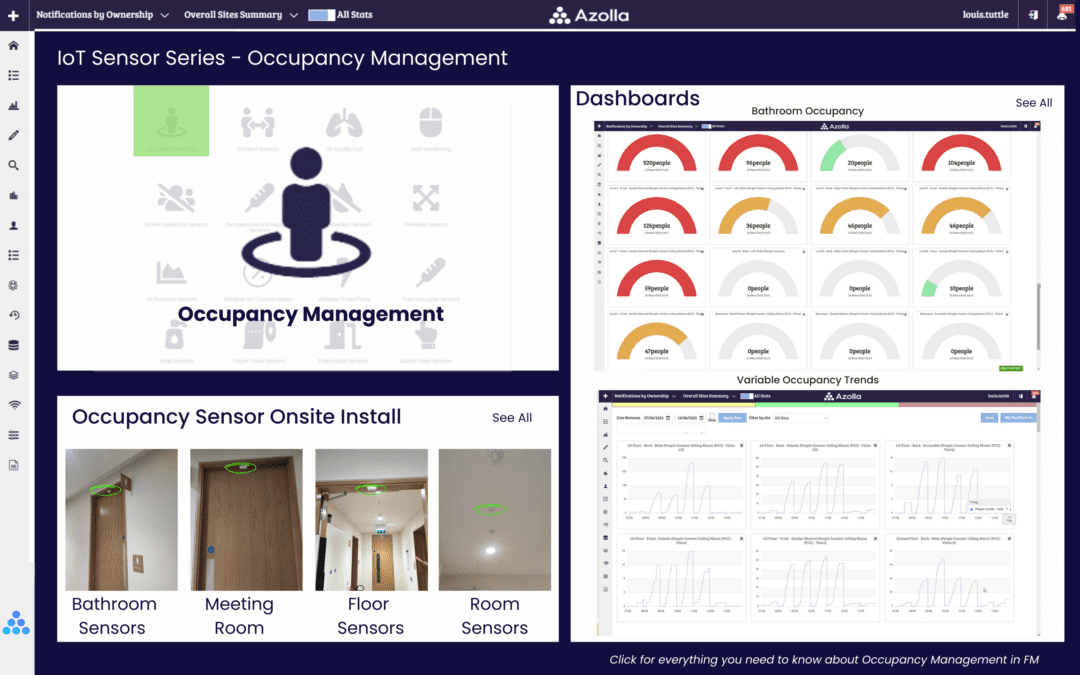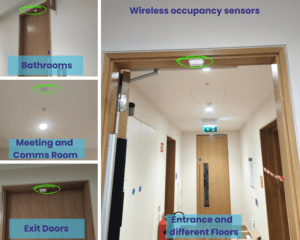Maximising Efficiency with Occupancy Management IoT Sensors in Facilities Management
In the ever evolving facilities and building management, optimising energy use, enhancing security, and improving occupant comfort are paramount. One technology that addresses all these aspects is the occupancy sensor. This post delves into who would use occupancy sensors, the myriad benefits they offer, the ease of their setup and installation, and why it is crucial for building managers to adopt this technology.
Who Uses Occupancy Sensors?
Occupancy sensors are versatile tools employed by various roles within a building management ecosystem:
- Facilities Managers: Responsible for the overall maintenance and efficiency of the building, facilities managers use occupancy sensors to monitor space usage, ensuring that areas are utilised optimally and energy is conserved.
- Energy Managers: Tasked with reducing the building’s energy consumption, energy managers leverage occupancy sensors to control lighting, HVAC systems, and other energy-consuming devices, thereby minimising waste.
- Security Personnel: For those overseeing the safety of the building, occupancy sensors provide crucial insights into movement patterns, helping to detect unauthorised access and ensuring that areas are secure when not in use.
- Building Owners: Owners interested in reducing operational costs and improving the marketability of their properties find occupancy sensors beneficial for creating energy-efficient and secure environments.
- IT Managers: In smart buildings, IT managers integrate occupancy sensors with building management systems (BMS) to collect data, automate responses, and improve the overall functionality of the facility.
- Operations Directors: Overseeing the broader scope of a building’s functions, operations directors use occupancy sensors to streamline processes, ensure optimal resource allocation, and enhance overall operational efficiency.
Benefits of Occupancy Sensors:
The implementation of occupancy sensors brings a multitude of advantages:
- Service Delivery: Occupancy sensors allow FM managers to deliver services like cleaning and catering based on real occupancy numbers rather than planned. The result is lower costs through the implementation of ‘On Demand’ cleaning as well as reduced waste which contributes to CSR obligations’.
- Energy Efficiency: By automatically controlling lights, HVAC systems, and other electrical devices based on occupancy, sensors can reduce energy consumption by up to 30%. For example, in an office building consuming €100,000 annually on energy, this could mean savings of up to €30,000 per year.
- Cost Savings: Reduced energy usage translates to financial savings, making the building more cost-effective to operate. Occupancy sensors typically offer a return on investment (ROI) within one to three years, depending on the size of the installation and energy costs.
- Improved Comfort: Occupancy sensors ensure that spaces are lit and climate-controlled only when occupied, enhancing the comfort of building users. This can lead to increased productivity and satisfaction among employees or tenants.
- Enhanced Security: Real-time monitoring of movement helps in identifying unauthorised access and ensuring that security measures are activated in unoccupied areas. This can reduce security-related incidents by up to 20%.
- Data-Driven Decisions: Sensors provide valuable data on space utilisation, which can inform decisions on space planning, maintenance schedules, and resource allocation. This data can help optimise space use, potentially reducing the need for additional space and associated costs by 10-15%.
- Sustainability: By reducing energy consumption, occupancy sensors contribute to the building’s overall sustainability, helping to meet environmental goals and regulatory requirements. This not only helps in achieving certifications like BREEAM or LEED but also enhances the building’s marketability.
Importance for Building Managers:
For building managers, incorporating occupancy sensors is not just a matter of convenience; it is a strategic decision with far-reaching implications. Here’s why it is important:
- Operational Efficiency: Occupancy sensors enable more efficient use of resources, reducing waste and improving the overall functionality of the building.
- Regulatory Compliance: With increasing regulations around energy efficiency and sustainability, occupancy sensors help buildings comply with legal requirements, avoiding potential fines and enhancing reputational standing.
- Tenant Satisfaction: By creating a more comfortable and secure environment, occupancy sensors contribute to higher tenant satisfaction and retention, which is vital for maintaining occupancy rates and rental income.
- Future-Proofing: As buildings become smarter and more connected, occupancy sensors are an essential component of modern building management, ensuring that the facility is equipped to leverage emerging technologies.
Ease of Setup and Installation:
One of the standout features of modern occupancy sensors is their ease of setup and installation. Here’s an overview of the process:
- IT Infrastructure: Occupancy sensors are wireless, which means no cabling and drilling. More importantly, these sensors communicate independently of the building’s IT infrastructure and don’t need the company’s Wi-Fi. Data is encrypted and stored in the cloud for analysis or to create alert notifications. This makes it secure and ensures that there are no risks to the Client’s IT systems.’
- Planning and Assessment: Determine the areas where occupancy sensors will be most effective. Consider high-traffic zones, offices, restrooms, and meeting rooms.
- Selection of Sensors: Choose the appropriate type of sensors based on the specific needs of each area. Common types include passive infrared (PIR) & Thermopile, sensors, ultrasonic sensors, and dual-technology sensors.
- Installation: Sensors can be mounted on walls, ceilings, or integrated into lighting fixtures. The installation typically involves minimal wiring and can often be done without significant disruption to the building’s operations.
- Integration with BMS: Modern occupancy sensors can be seamlessly integrated with existing building management systems, allowing for centralised control and monitoring.
- Configuration and Calibration: After installation, sensors need to be calibrated to ensure optimal performance. This involves setting sensitivity levels, time delays, and other parameters based on the specific use case.
- Testing and Optimisation: Conduct thorough testing to ensure that the sensors are functioning correctly. Periodic maintenance and adjustments may be required to maintain optimal performance.
Closing thoughts on Occupancy Management IoT Sensors:
Occupancy mangement IoT sensors are a powerful tool in the arsenal of facilities and building managers, offering a range of benefits from energy efficiency and cost savings to enhanced security and occupant comfort. With straightforward setup and installation processes, they are an accessible solution for buildings of all sizes. Embracing this technology not only optimises building operations but also contributes to broader sustainability goals, making it a smart choice for modern facilities management. As a building manager, investing in occupancy sensors is a strategic move that promises significant returns in operational efficiency, regulatory compliance, tenant satisfaction, and future-proofing.
Want to know more?
Discover how Occupancy Management IoT Sensors can revolutionise your operations. Learn how to seamlessly integrate these advanced technologies into your existing systems to optimise efficiency, enhance security, and improve occupant comfort. Don’t miss out on the opportunity to stay ahead of the curve and drive innovation in your facility management strategy.
Get in touch below if you would like to find out more about IoT for your organisation or client sites.



